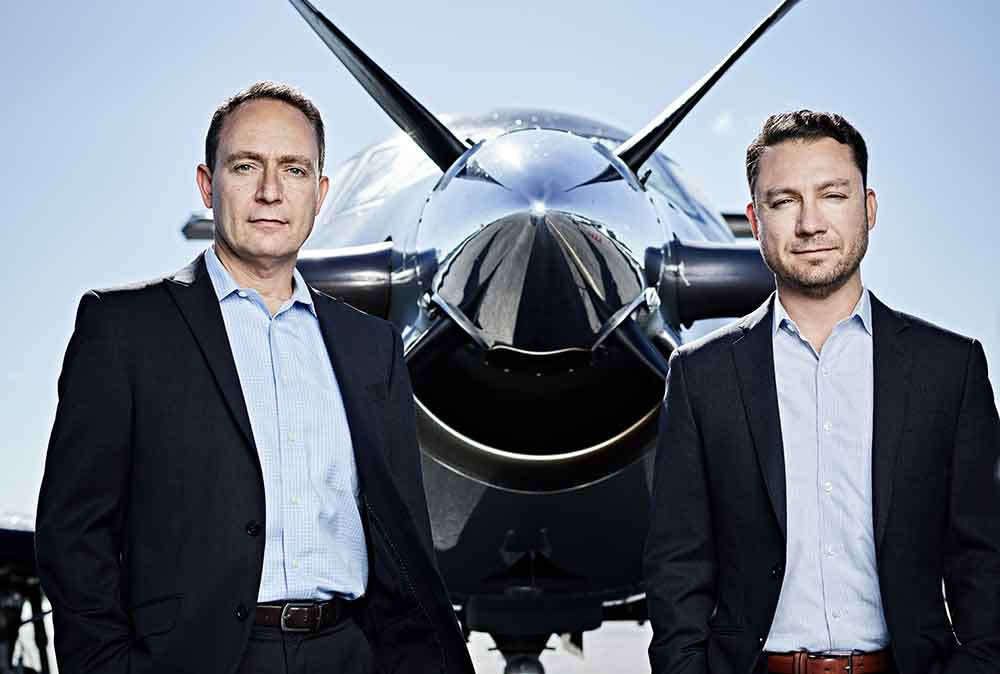For decades, Nantucket’s upscale island lifestyle has beckoned the affluent to its pristine (and sometimes private) beaches and charming, luxurious resorts. (Turn to page 78 for our guide to the best resorts Nantucket has to offer.) Despite its proximity to Boston, Newport, and New York City, however, this exclusive New England island hasn’t always been easy to access.
Up until the early 2000s, the most prevalent means of Nantucket-bound travel were not without their flaws. Residents and vacationers could take various ferries to and from the island, but summer traffic and slow ocean passages could make that method of travel a time-consuming affair. Conversely, travelers could purchase a commercial airline ticket, but Nantucket’s unpredictable weather—specifically the fast-moving fog that routinely settles over the island—often leads to delays or flight cancellations. It wasn’t until 2002, when Eric and David Zipkin launched Tradewind Aviation, that travelers could easily enjoy an expedited journey to the island.
“Nantucket was and continues to be our headline destination,” says Eric, president of the independent aviation company.
.jpg)
.jpg)
“We’ve made it a viable weekend destination for a lot of people,” adds David, Tradewind vice president, who explains that because the company only operates a scheduled luxury shuttle service throughout the Northeast and the Caribbean (as well as on-demand private charters), it can delay flights to Nantucket longer than most commercial airlines or redirect them to Cape Cod for a brief layover before continuing to the island once the fog clears. “We have tricks up our sleeves to get people there in a more consistent way than airlines will.”
Utilizing a fleet of Pilatus PC-12s—aircraft capable of flying 1,700 miles at 300 mph and at an altitude of 20,000 feet—Tradewind Aviation offers routine shuttle service from Boston, New York City, and White Plains, New York, to Nantucket, Martha’s Vineyard, Stowe, Vermont, and other emerging Northeast destinations, including coastal Maine. Customers who reserve a seat on any of those flights, which start at $300 with no restrictions, are treated to the same type of pre-flight experiences as those who charter a private jet, including check-in times as close as 15 minutes to takeoff and no TSA security procedures.
In the Caribbean, Tradewind operates from a hub in the San Juan airport and provides travelers with the use of a private lounge and also eliminates TSA screening. From there, it can shuttle its customers to Anguilla, St. Bart’s, Antigua, Saint Thomas, and Nevis. “We’re very different than what you’d experience with other airlines,” says David, “especially down in the Caribbean.”
.jpg)
.jpg)
According to Eric, the market for Tradewind Aviation depends on two factors: an affluent consumer base and a need to reach out-of-the-way destinations. In other parts of the country, he points to Aspen as a destination that will likely become more of a focal point for the company in coming years. “It’s difficult to reach,” he explains, “and the market would benefit from a high-end option coming from Denver or the other big airports nearby.”
There are hundreds of airports within the U.S. where a good-sized jet can land, notes David, but there are thousands more that are only accessible by smaller aircraft like Tradewind’s Pilatus PC-12. Montauk, New York, is an ideal example.
“In Montauk, there’s a perfect little runway for us to get in,” David says. “We have quite a few clients who have their own jets, but even if you own a private jet, you’re not getting any closer than East Hampton. So they fly with us because they can get much closer to where they want to go.”
Tradewind Aviation also owns and operates its own aircraft, which both Zipkin brothers acknowledge is a pivotal selling point for customers. “It’s our pilot, our dispatchers, our maintenance; and because of that, we’re able to provide a higher level of service,” says David. “Eric and I are also very involved in the client experience, to a point that we know a lot of our clients. They know they’re not dealing with a large, multilayered organization. It’s more like a family club.”
Image Credits: Photo Courtesy of Tradewind Aviation .


